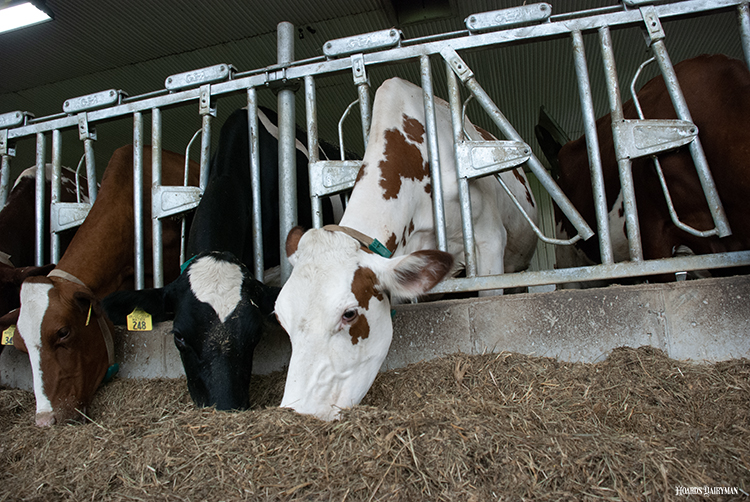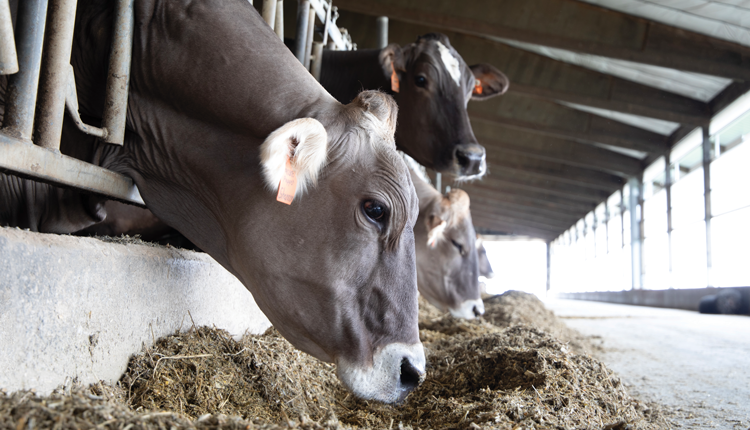
Establishing high-forage diets has been an indispensable practice to optimize milk components and dairy profitability. Forage fiber promotes chewing and salivation, rumen motility and health, and regulates feed consumption. In addition, the interaction of animal characteristics, feeding environment, forage concentration in the diet, nutritive value, and physical characteristics all work together to modulate dairy cows’ feeding and resting patterns.
The amount of time a cow spends at the feedbunk is called eating time. This includes the time for eating, masticating, and sorting. Diets pushing cows to spend more time eating will restrict feed consumption, resting, and rumination while resting. Rest and rumination are essential for cow health and the time cows spend ruminating while resting is associated with greater intake and production.
Even though feeding greater concentrations of forage in the diet elevates eating time, replacing forage fiber with nonforage fiber sources should be considered cautiously. Last summer, we conducted a study evaluating the replacement of corn silage with soy hulls and high-moisture corn. The nutrient composition was similar between both diets, except for the source of fiber (20% and 16% of forage NDF for the high and low forage diets, respectively). Feeding a high forage diet reduced intake while maintaining energy-correct milk yield and improved income over feed costs.
A better option
Focusing on improving forage quality is a better option. Forages with lower digestibility or harvested with a greater proportion of coarse particles increase eating time while reducing intake and performance. This especially holds true for corn silage. Corn silage particles must be coarse enough to serve as physically effective fiber and stimulate rumination but not too coarse to induce sorting and restrict consumption.
With the arrival of summer, we have reached the time of the year where farmers spend countless hours preparing the largest portion of a dairy cow’s meal. During the forage harvest many decisions that affect nutritive value over the next year will be made in a short, stressful time span. Planning ahead with brainstorming meetings between dairy farmers, nutritionists, agronomists, and crop consultants can improve forage fiber digestibility and ensure adequate particle size is advised.
Be safe and happy harvesting.








